Showing Spotlights 945 - 952 of 2785 in category All (newest first):
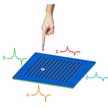 In order to make robots and robotic technology more human-like and more human-friendly, smart skin technology is a critical element that helps robots sense the world. These electronic or smart skins could help machines to accurately perceive the environment and better assist human owners. By applying the triboelectric effect and planar electrostatic induction, researchers for the first time have created a self-powered analogue smart skin.
In order to make robots and robotic technology more human-like and more human-friendly, smart skin technology is a critical element that helps robots sense the world. These electronic or smart skins could help machines to accurately perceive the environment and better assist human owners. By applying the triboelectric effect and planar electrostatic induction, researchers for the first time have created a self-powered analogue smart skin.
Apr 8th, 2016
 Modern liquid crystals devices utilize high resistivity liquid crystals characterized by negligibly small concentration of mobile ions. However, these devices are prone to uncontrolled ionic contamination. This contamination can easily happen at any stage of the device fabrication or while operating the device. Ions in liquid crystals can compromise the overall performance of the device by leading to many negative side effects such as image sticking, image flickering, and slow response. Solving these problems requires the development of new methods, suitable for the permanent purification of liquid crystals from ions.
Modern liquid crystals devices utilize high resistivity liquid crystals characterized by negligibly small concentration of mobile ions. However, these devices are prone to uncontrolled ionic contamination. This contamination can easily happen at any stage of the device fabrication or while operating the device. Ions in liquid crystals can compromise the overall performance of the device by leading to many negative side effects such as image sticking, image flickering, and slow response. Solving these problems requires the development of new methods, suitable for the permanent purification of liquid crystals from ions.
Mar 30th, 2016
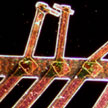 To explore the intrinsic mechanisms of the electrochemical reactions of porous graphene oxide in situ, the single-nanowire electrochemical probe is an effective tool. Although graphene is usually used as an additive in active materials to improve the electrochemical performance, how graphene influences the electrochemical performance and reaction mechanisms of electrode materials is under dispute. To address these issues, researchers have explored single-nanowire electrochemical devices to investigate the capacitance, ion diffusion coefficient, and charge storage mechanisms of graphene.
To explore the intrinsic mechanisms of the electrochemical reactions of porous graphene oxide in situ, the single-nanowire electrochemical probe is an effective tool. Although graphene is usually used as an additive in active materials to improve the electrochemical performance, how graphene influences the electrochemical performance and reaction mechanisms of electrode materials is under dispute. To address these issues, researchers have explored single-nanowire electrochemical devices to investigate the capacitance, ion diffusion coefficient, and charge storage mechanisms of graphene.
Mar 29th, 2016
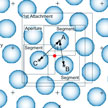 The drawbacks of existing measures for calibrating scanning probe microscopes (SPMs) based on various diffraction gratings and periodic microstructures, are large period and large error of period. Both factors prevent using these measures for precise calibration of SPMs and other instruments operating in the nanometer range. To address this issue, researchers have developed a method of calibration of a scanning probe microscope by lattice constant of a crystal.
The drawbacks of existing measures for calibrating scanning probe microscopes (SPMs) based on various diffraction gratings and periodic microstructures, are large period and large error of period. Both factors prevent using these measures for precise calibration of SPMs and other instruments operating in the nanometer range. To address this issue, researchers have developed a method of calibration of a scanning probe microscope by lattice constant of a crystal.
Mar 25th, 2016
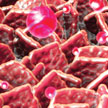 Lithium (Li) metal-based batteries such as Li-sulfur and Li-air batteries have received considerable attention because Li metal can store 10 times more energy than graphite. However, there are safety and performance concerns for these types of batteries that arise from the formation of dendrites on the electrodes. To address this issue, researchers have proposed an unstacked graphene nanostructured lithium metal anode for lithium metal batteries to inhibit lithium dendrite growth and bring superior electrochemistry performance.
Lithium (Li) metal-based batteries such as Li-sulfur and Li-air batteries have received considerable attention because Li metal can store 10 times more energy than graphite. However, there are safety and performance concerns for these types of batteries that arise from the formation of dendrites on the electrodes. To address this issue, researchers have proposed an unstacked graphene nanostructured lithium metal anode for lithium metal batteries to inhibit lithium dendrite growth and bring superior electrochemistry performance.
Mar 15th, 2016
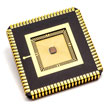 Our environment will slowly but surely evolve into an 'Internet of Things', where chips and sensors are integrated invisibly in the environment to assume their manifold tasks. Think of sensors that detect the presence of individuals and adapt the light in a building accordingly, resulting in serious energy savings. Those sensors will be, in a sense, the eyes, ears, and noses of our environment. At the recent ISSCC-conference, researchers have presented a number of remarkable developments. These may pave the way to a world where sensors assist us to drive more safely, live healthier, and make the planet more sustainable.
Our environment will slowly but surely evolve into an 'Internet of Things', where chips and sensors are integrated invisibly in the environment to assume their manifold tasks. Think of sensors that detect the presence of individuals and adapt the light in a building accordingly, resulting in serious energy savings. Those sensors will be, in a sense, the eyes, ears, and noses of our environment. At the recent ISSCC-conference, researchers have presented a number of remarkable developments. These may pave the way to a world where sensors assist us to drive more safely, live healthier, and make the planet more sustainable.
Mar 10th, 2016
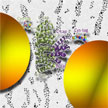 The manufacture of nanoparticles has reached a very high level of control of their shape, size and chemical nature. However, assembling nanoparticles in a controlled manner and with clearly defined functionalities in three-dimensional space remains quite a challenge. Researchers have now taken a first step towards the goal of protein-driven assembly of nanoparticles. In this ground-breaking work, they show that gold nanoparticles with a diameter of 10nm can be assembled using two different protein pairs.
The manufacture of nanoparticles has reached a very high level of control of their shape, size and chemical nature. However, assembling nanoparticles in a controlled manner and with clearly defined functionalities in three-dimensional space remains quite a challenge. Researchers have now taken a first step towards the goal of protein-driven assembly of nanoparticles. In this ground-breaking work, they show that gold nanoparticles with a diameter of 10nm can be assembled using two different protein pairs.
Mar 8th, 2016
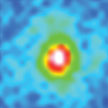 Luminescent quantum dots (LQDs), which possess high photoluminescence quantum yields, flexible emission color controlling, and solution processibility, are promising for applications in lighting systems (warm white light without UV and infrared irradiation) and high quality displays. However, the commercialization of LQDs has been held back by the prohibitively high cost of their production. In a breakthrough approach, researchers have now succeeded in preparing highly emissive inorganic perovskite quantum dots at room temperature.
Luminescent quantum dots (LQDs), which possess high photoluminescence quantum yields, flexible emission color controlling, and solution processibility, are promising for applications in lighting systems (warm white light without UV and infrared irradiation) and high quality displays. However, the commercialization of LQDs has been held back by the prohibitively high cost of their production. In a breakthrough approach, researchers have now succeeded in preparing highly emissive inorganic perovskite quantum dots at room temperature.
Mar 7th, 2016
 In order to make robots and robotic technology more human-like and more human-friendly, smart skin technology is a critical element that helps robots sense the world. These electronic or smart skins could help machines to accurately perceive the environment and better assist human owners. By applying the triboelectric effect and planar electrostatic induction, researchers for the first time have created a self-powered analogue smart skin.
In order to make robots and robotic technology more human-like and more human-friendly, smart skin technology is a critical element that helps robots sense the world. These electronic or smart skins could help machines to accurately perceive the environment and better assist human owners. By applying the triboelectric effect and planar electrostatic induction, researchers for the first time have created a self-powered analogue smart skin.
 Subscribe to our Nanotechnology Spotlight feed
Subscribe to our Nanotechnology Spotlight feed





